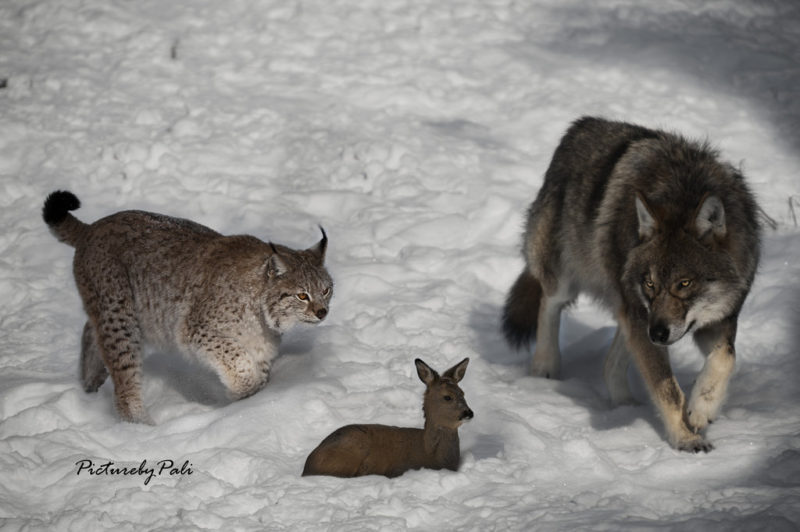Effect of domestication on food preferences and metabolic capacity of dog
– why a dogs don’t eat like a wolfs?
In order to be able to live near human settlements, the ancestor of the dog had to not only break the fear of human, but also adapt the body to make maximum use of the waste food. Some of metabolic pathways have been modified, and new digestive capacity has emerged. This is the true species evolution that the dog’s progenitor had to undergo in order to finally become a domestic animal!
The metabolic revolution!
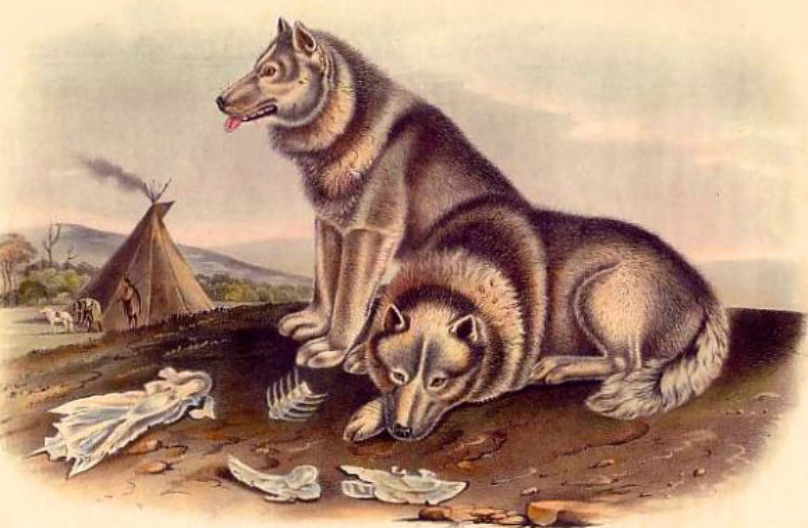 The population could be considered tame when the pre-dog has better adapted to prey on waste food and reproducing in the closeness of human, changing from a predator hunting in a well-matched pack, to a half-lone scavenger-commensal. Considering the food preferences of the dog, it is necessary to think what were these “leftovers” of food, thrown on the outskirts of the settlement by people at that time.
The population could be considered tame when the pre-dog has better adapted to prey on waste food and reproducing in the closeness of human, changing from a predator hunting in a well-matched pack, to a half-lone scavenger-commensal. Considering the food preferences of the dog, it is necessary to think what were these “leftovers” of food, thrown on the outskirts of the settlement by people at that time.
As the settlement is inseparably connected with the beginning of agriculture and the set up of the first farms, it should be remembered that 13,000 – 17,000 years ago the diet of people was comprise not only meat of hunted animals, but also a large part was vegetation cultivated by settlers (Bosch et al. , 2015).
The first village dog population was created from ancient Canidae in the way od natural selection. Natural selection was targeted not only by the size of the dog and the reduction of its energy requirements, but also to certain specific metabolic abilities, give the dog to better digest a vegetable starch.
Ground-breaking genes AMY2B, MGAM, SGLT1
 As reported in the publication of Bosch et al. (2015), the latest research shows that the natural selection was certainly focused on the presence of three genes in the genotype dogs of the time (AMY2B, MGAM, SGLT1) that affect the digestibility of starch in the duodenum and uptake of glucose from the bloodstream. In this way, natural selection has equipped all the ancient village dogs with a much better ability to feed on leftovers, compared to their wild cousins – wolves.
As reported in the publication of Bosch et al. (2015), the latest research shows that the natural selection was certainly focused on the presence of three genes in the genotype dogs of the time (AMY2B, MGAM, SGLT1) that affect the digestibility of starch in the duodenum and uptake of glucose from the bloodstream. In this way, natural selection has equipped all the ancient village dogs with a much better ability to feed on leftovers, compared to their wild cousins – wolves.
What amazing discovery! Well, we have a tangible proof that indeed a dog, after thousands years of life alongside a human, underwent a real metabolic evolution !
But the question is – is “dog” a coherent species, which domestication had proceeding similar in every place on Earth …?
The village dogs vs. the nomad dogs and their capacity to digest starch
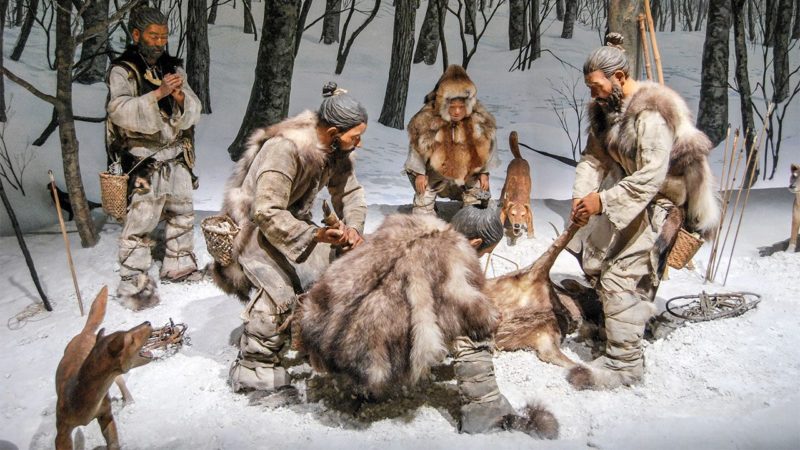
Museum replication featuring Jōmon warriors hunting with dogs.

Hunting with dogs
The use of the first dogs was really various and apart from the wandering rural population, some dogs lived with human tribes that still fed only hunted animals (Bosch et al. 2015). For that people, dogs were an important tool to facilitate the tracking, killing and transport of wild game. Often it was up to the dogs if the tribe would have enough meat to eat. Therefore, this hunting dogs, after a successful hunt were lavishly rewarded, having their share in part of the hunted game. Logically, their organisms didn’t have to adapt to digesting plant foods.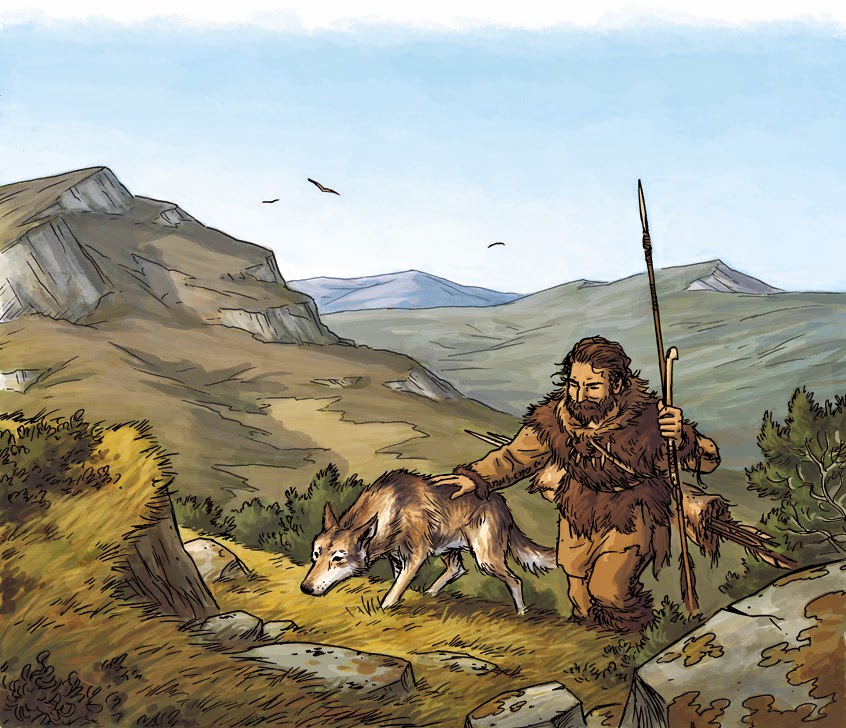
Siberian Husky does not digest starch …? The AMY2B gene
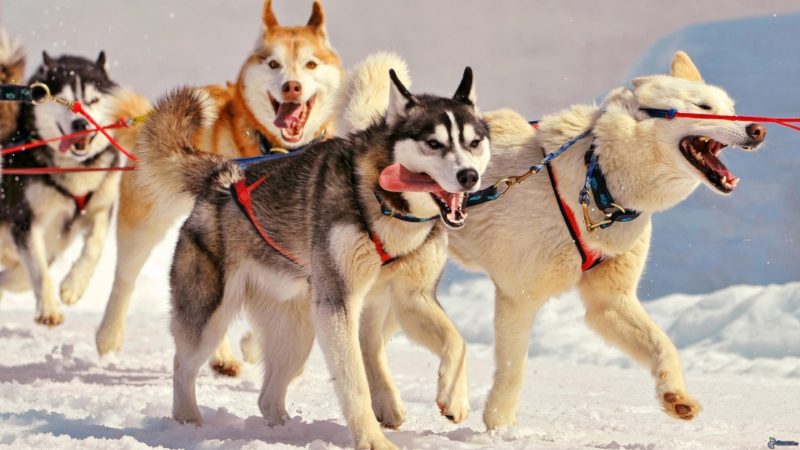
Bosch et al. (2015) indicate that there are many alleles of the AMY2B gene, and their number varies depending on the dog breed. There are also such breeds of dogs that don’t have any varieties of this gene, or have few. As an example, here are the wild dingo dogs and the breed of dogs – Siberian Husky, which is very popular nowadays. Because the presence of the AMY2B gene determines a better digestibility of starch, it can be concluded that Siberian Husky dogs lived alongside hunter-gatherers, not farmers. Probably in a similar situation are all breeds of northern dogs and many breeds derived from huntered nomadic tribe dogs.
Recent research also show that the capacity to synthesize the right amounts of important nutrients, such as niacin, taurine and arginine, hasn’t been modified by domestication (Bosh et al., 2015). An exception to this rule are probably some dog breeds.
 It is known that the American cocker spaniels and Newfoundlands are characterized by a low level of taurine in the blood, which in US cocker spaniels may be the cause of the occurring often dilated cardiomyopathy (Kulasek et al., 2005).
It is known that the American cocker spaniels and Newfoundlands are characterized by a low level of taurine in the blood, which in US cocker spaniels may be the cause of the occurring often dilated cardiomyopathy (Kulasek et al., 2005).
These rather interesting observations could be extended to research on other breeds tormented by this heart defect. For e.g. Is it possible that dilated cardiomyopathy occuring with boxer is linked with low level of taurine in blood? And the next question – Are the other dog breeds burdened with this genetic defect have also the problem with this amino acid…? This is undoubtedly an interesting topic for further research.
Is the dog a omnivorous?

While the BARF diet is on the top, in the meantime there are numerous scientific debates on the issue – should the dog be treated as a carnivorous or omnivorous species?
As reported by Bosch et al. (2015), in terms of metabolism, domestic dogs have certain characteristics in common with cats – obligatory carnivores. As examples, no salivary amylase enzyme that starts carbohydrate pre-digestion and conjugation of bile acid before being released from the liver with the help of taurine (which increases their solubility and improves emulsifying ability) and the ability to synthesize vitamin D3. Common feature of both species is short and simple digestive tract.
In turn, metabolic adaptations of dogs, such as frugal protein economy and the ability to synthesize niacin, help to survive in times of low availability of nutrients and, what’s interesting, are similar to those observed in omnivores. Omnivores such as pigs and rats are not able to survive such fasting periods as wolves experience, although they are able to adapt to the type and amount of food eaten, both plants and animal, because their availability are seasonality (Bosch et al. 2015).
Dogs are currently included among omnivores on the basis of features that differentiate them from carnivorous cats. Bosch et al. (2015) put forward the hypothesis that these features of “omnivores” evolved from the model of functioning of wild Canidae, called the “feast and satiety” model.
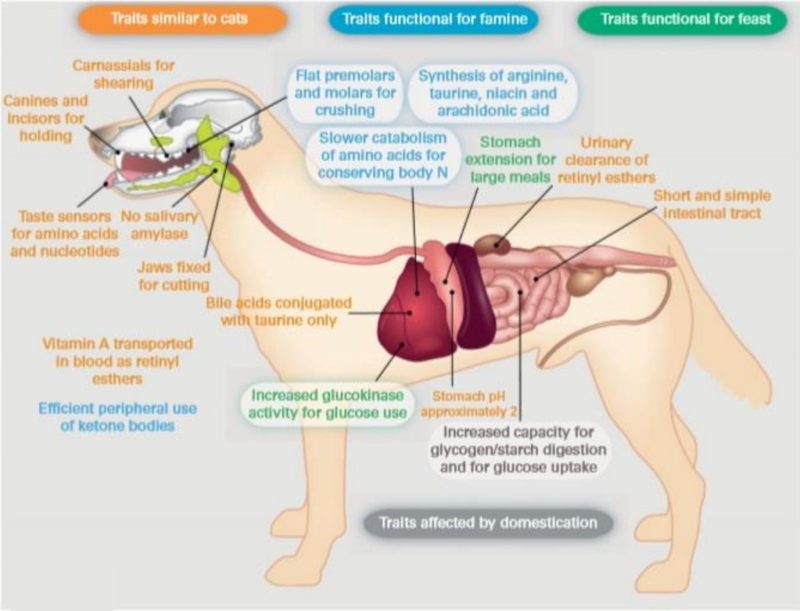
The perfect diet
 Above all – created especially for the breed and even the individual. There is no one perfect diet for all breeds of dogs.
Above all – created especially for the breed and even the individual. There is no one perfect diet for all breeds of dogs.
And now, coming back to the subject of various metabolic capabilities for i.a. vegetable starch, depending on the dog breed which we are dealing, should be asked – how did the each breed groups evolve? What was the genesis of their creation?
Only understanding the “roots” of our pet will allow us to choose the best diet for him.
There are dog breeds that prefer a diet model similar to that found in wild wolves. In turn, there are also those that very badly tolerate the high supply of raw meat, and despite good intentions of the owner, they feel discomfort when they’re feeding on BARF.
Therefore, the next topic will be “The shaping of dogs breeds”. 😉
Bibliography:
- Bosch G., Hagen-Plantinga E. A., Hendriks W. H. Dietary nutrient profiles of wild wolves:
insights for optimal dog nutrition? British Journal of Nutrition (2015), 113, s. 40–54; - Case L.P. Człowiek i wilk: proces udomowienia. W: Case L.P. Pies – zachowanie, żywie-
nie, zdrowie. Łódź: Wydawnictwo Galaktyka (2010); - Kulasek G., Lechowski R., Sawosz E., Jank M. Tauryna w dietoprofilaktyce oraz dietote-
rapii kotów i psów. Życie weterynaryjne (2005), tom 80, 2, s. 103.

